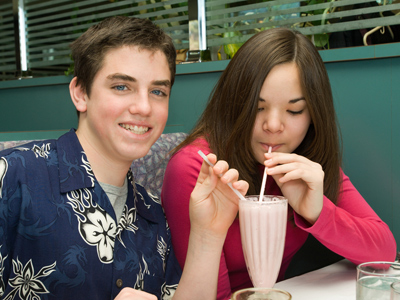
Ask the AI Tutor
Need help with Literary Techniques? Ask our AI Tutor!
AI Tutor - Lucy
Connecting with Tutor...
Please wait while we establish connection

'Slurp', 'drizzle' and 'glug' are all examples of which literary technique?
Literary Techniques
Writers use literary techniques to create impact. Learn how personification, metaphor and juxtaposition shape tone, mood and meaning, then spot them in speeches, fiction and articles.
1 .
Match the definition to the correct literary technique.
Non-literal language; metaphorical or rhetorical language.
Non-literal language; metaphorical or rhetorical language.
Formal language
Figurative language
Creative language
Informal language
2 .
Match the definition to the correct literary technique.
A story in which everything symbolises something else.
A story in which everything symbolises something else.
Fiction
Motif
Allegory
Narrative
A story or poem containing allegory can also be described as 'allegorical'
3 .
Match the definition to the correct literary technique.
An example of figurative language which treats one thing as if it were another.
An example of figurative language which treats one thing as if it were another.
Metaphor
Alliteration
Paradox
Utopia
4 .
Match the definition to the correct literary technique.
The repetition of vowel sounds in words that are close together.
The repetition of vowel sounds in words that are close together.
Rhyme
Sonnet
Assonance
Onomatopoeia
5 .
Match the definition to the correct literary technique.
An object, person or colour used to represent an idea.
An object, person or colour used to represent an idea.
Theme
Mood
Symbol
Simile
6 .
Match the definition to the correct literary technique.
The repetition of the 's' or 'sh' sound.
The repetition of the 's' or 'sh' sound.
Sibilance
Alliteration
Scansion
Simile
7 .
Match the definition to the correct literary technique.
An example of figurative language in which inanimate objects are given human characteristics.
An example of figurative language in which inanimate objects are given human characteristics.
Trope
Onomatopoeia
Hyperbole
Personification
'The leaves on the tree shivered in the chill easterly breeze' would be an example of personification. Inanimate objects don't literally shiver
8 .
Match the definition to the correct literary technique.
A word which recreates the sound which it represents.
A word which recreates the sound which it represents.
Onomatopoeia
Alliteration
Assonance
Consonance
'Slurp', 'drizzle' and 'glug' are all examples of onomatopoeia
9 .
Match the definition to the correct literary technique.
A contrast between the audience's expectations and the reality of events.
A contrast between the audience's expectations and the reality of events.
Satire
Paradox
Situational irony
Dramatic irony
An example of situational irony is when Macbeth believes the witches' prophecies about his invincibility only to discover that Burnham wood came to Dunsinane in a way neither he nor the audience could predict
10 .
Match the definition to the correct literary technique.
A description of one thing as being similar to something else.
A description of one thing as being similar to something else.
Metaphor
Personification
Simile
Idiom
**Unlimited Quizzes Await You! 🚀**
Hey there, quiz champ! 🌟 You've already tackled today's free questions.
Ready for more?
Ready for more?
🔓 Unlock UNLIMITED Quizzes and challenge yourself every day. But that's
not all...
not all...
🔥 As a Subscriber you can join our thrilling "Daily Streak" against other
quizzers. Try to win a coveted spot on our Hall of Fame Page.
quizzers. Try to win a coveted spot on our Hall of Fame Page.
Don't miss out! Join us now and keep the fun rolling. 🎉
**Unlimited Quizzes Await You! 🚀**
Hey there, quiz champ! 🌟 You've already tackled today's free questions. Ready for more?
🔓 Unlock UNLIMITED Quizzes and challenge yourself every day. But that's not all...
🔥 As a Subscriber you can join our thrilling "Daily Streak" against other quizzers. Try to win a coveted spot on our Hall of Fame Page.
Don't miss out! Join us now and keep the fun rolling. 🎉






